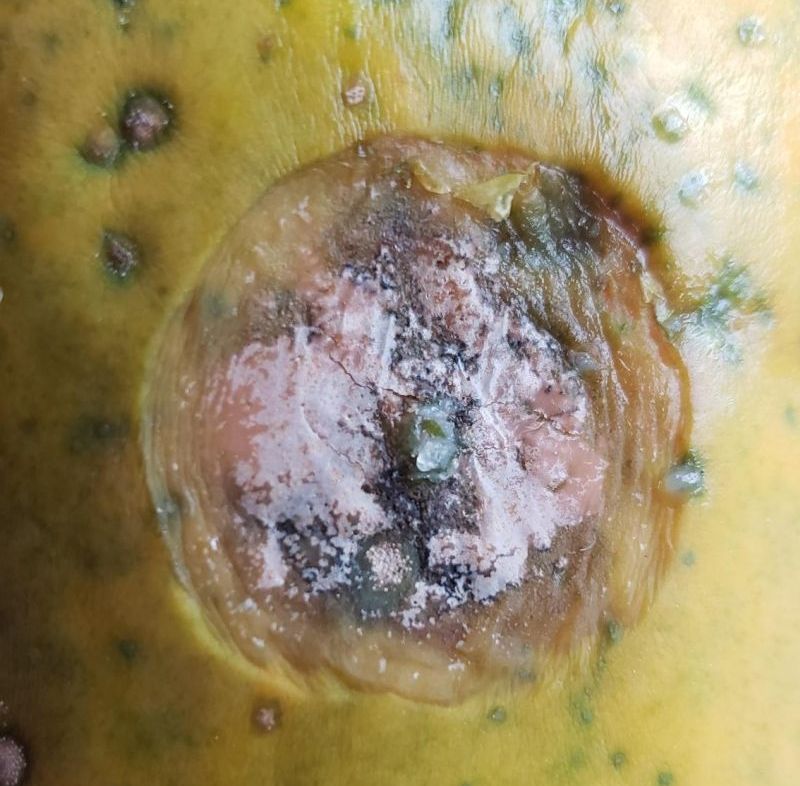One of the important pathogens that cause anthracnose disease on papaya is Colletotrichum gloeosporiodes. Anthracnose disease is a common disease on many tropical and subtropical fruits in Florida such as mango. The management of this disease is important because it can make a huge loss in final yield. Likewise, the symptom of disease makes fruits of papaya and mango aesthetically unpleasant.
Other than leaves, anthracnose’s symptoms appear on fruits of papaya. The symptoms appear as small water-soaked spots on ripe fruits. When the spot develops, it turns to large (2 inches in diameter) sunken brown or black colors. The fungus may produce a colony of spores in the center of the old spots. Although the symptoms appear on the fruit surface, the pathogen can grow into the fruit, and make the tissue soft and change the flavor of the pulp.
Control: Because of the severity of damage that anthracnose causes on ripe fruits, an effective fungicide spraying program should be started when the fruit set starts and to continue at appropriate intervals during the fruit set period.


 0
0
